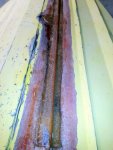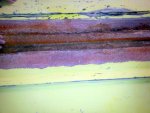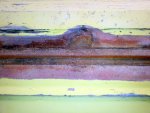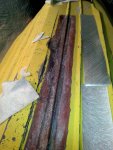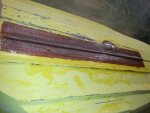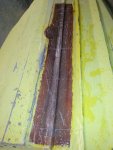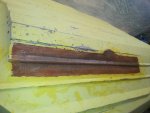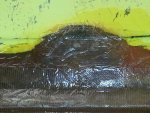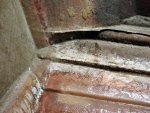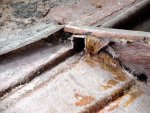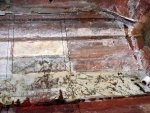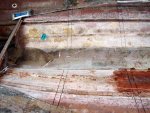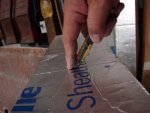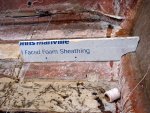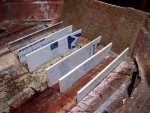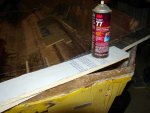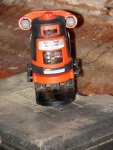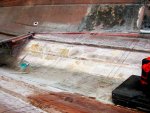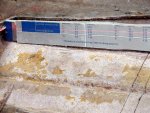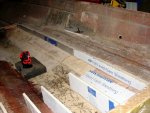Re: 1979 Champion Bass Boat - Tear Down and Restoration -- with PICS
... but feel you are creating an unsafe craft.
I bought this boat used. It truly proved the adage that "when you buy a used boat, you're actually buying a used motor and the boat is free." I ran this boat for five years with all the stringers and the transom completely rotted. I mean so rotted and so full of water that I could literally squeeze water out of the wood like a sponge, with my bare hands. The stringers' fiberglass had been torn away from the hull, probably from the water in the stringer cores freezing and thawing winter after winter.
So basically, the boat had NO stringers. The deck was actually being held up because a previous owner had "fixed" it, and spread a solid layer of adhesive between the upper shell's floor and the hull's deck! The transom was mush between the hull and the inner wall.
The boat ran and handled quite well (and seemingly safely) in this condition. (I realize, of course, that it wasn't safe.) The only reason I got into this was because a previous owner had done a half-a** job of repairing the broken hull, which gave way. I could reassemble the stringers and hull with Tinker Toys and duck tape, and it would be stronger than it was.
Woodonglass, I truly appreciate your opinions and input. I have followed many of your guidelines. (I even noticed when you recently changed your stringer layup instructions, to lay biax over the top instead of shredded CSM.) Many of your comments have sent me off on even deeper research.
Please don't suggest that I have not researched this. I have researched it heavily. This is not the only boating forum on the Internet with people who are well experienced with fiberglass. I have searched and read every forum I could find, every manufacturer's web site I could find, every supplier's instructions I could find. What I am doing is well within all those specs and guidelines, except (apparently) yours. You didn't like my choice of wood for the transom (rot-proof pressure-treated plywood instead of marine plywood (which both use the same glue, BTW)). You don't like foam cores for stringers. I can appreciate that. But don't tell me I haven't really thought this through.
It may well be that the reason your work doesn't fail is because you over-engineer and over-build. Nothing wrong with that. But I also have to consider that my budget constraints are very tight. I was delayed for 6 months on this simply because I had to wait until I could buy the fiberglass. I can't afford to buy more.
As for the "physics" of the stringers, my college degree is in Chemistry and Physics. I know a little bit about that stuff. The forces involved are not side-to-side, thus the trapezoidal shape for a stringer is not necessary. In fact, I found many references to making stringers out of single vertical sheets of plywood, with solid wood "pads" on the top to support the deck, and no fiberglass!
For your deck to attach to the stringers and bulkheads correctly they must all be of uniform height.
Thus my use of a laser level to line them up.
If you're referring to the main deck needing to be the same height as the decks in the stern area, that apparently is not true. These were never connected, and the deck lines in the hull are at different heights by about an inch. The original design of the boat had no deck in the section holding the rear live well, because the live well almost reaches the hull itself. It was just open area between stringers. At least I'm going to cover the side areas and fill them with foam. That's more than Champion did out of the box.
This is my boat. I plan to never sell it. At my age, I can't see ever buying another boat. The only upgrade I can see is that I might re-power sometime later, to a motor with direct injection so it will start quicker, and that has a real trim/tilt system, instead of just a trim system like this one has. Anyway, if it meets my standards (which actually are pretty high), then what does it matter? Whatever I do, it's going to end up lighter and stronger than the day it came out of the factory, with zero risk of rot ever occurring again.






















